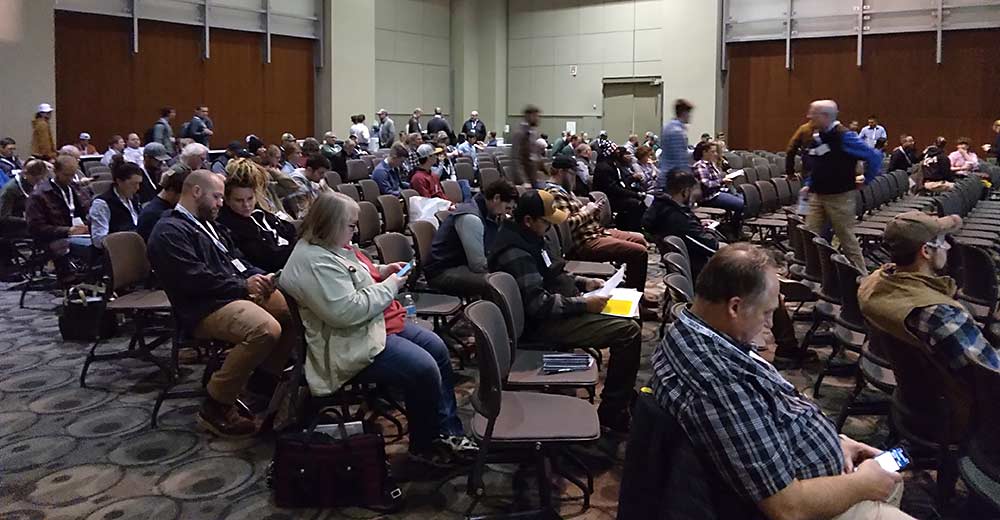
Grape insect pests were a hot topic on Day 1 of the 2023 Great Lakes Fruit, Vegetable and Farm Market EXPO in Grand Rapids, Michigan, on Dec. 5.
During the Grape 1 session, Michigan State University entomology professor Rufus Isaacs told the audience: “We have a whole number of insects that would like to eat your grapes.”
One of the pests he mentioned is the grape erineum mite, which has been a problem for Northwest Michigan vineyards lately.
The erineum mite is a “strange-looking beast” that overwinters under the bark of 1-year-old canes and moves to leaves in spring. Because the mite is microscopic, you can’t see it without magnification. What you can see with the naked eye is a “weird patch of fuzzy white” on the lower surface of the leaves — densely curled leaf hairs in which the mites feed and reproduce, Isaacs said.
He also mentioned the “scourge” of the grape industry: grape berry moth. Grape berry moth larvae feed inside grapes before and after veraison. Damage from the pest makes grapes more susceptible to botrytis and sour rot infection, and it can attract fruit flies, wasps and ants.
When managing grape berry moth, scouting for eggs and larvae is important. Detecting egg laying and egg hatch helps accurately time insecticide controls. In high-pressure vineyards, egg laying may continue over many weeks late in the season, according to Isaacs.
Infestation is often greater on the vineyard border than the interior, particularly near woods and hedgerows. Regular cluster sampling in the interior and at the borders can help assess infestation levels and determine management needs, according to Isaacs.
—by Matt Milkovich






Leave A Comment